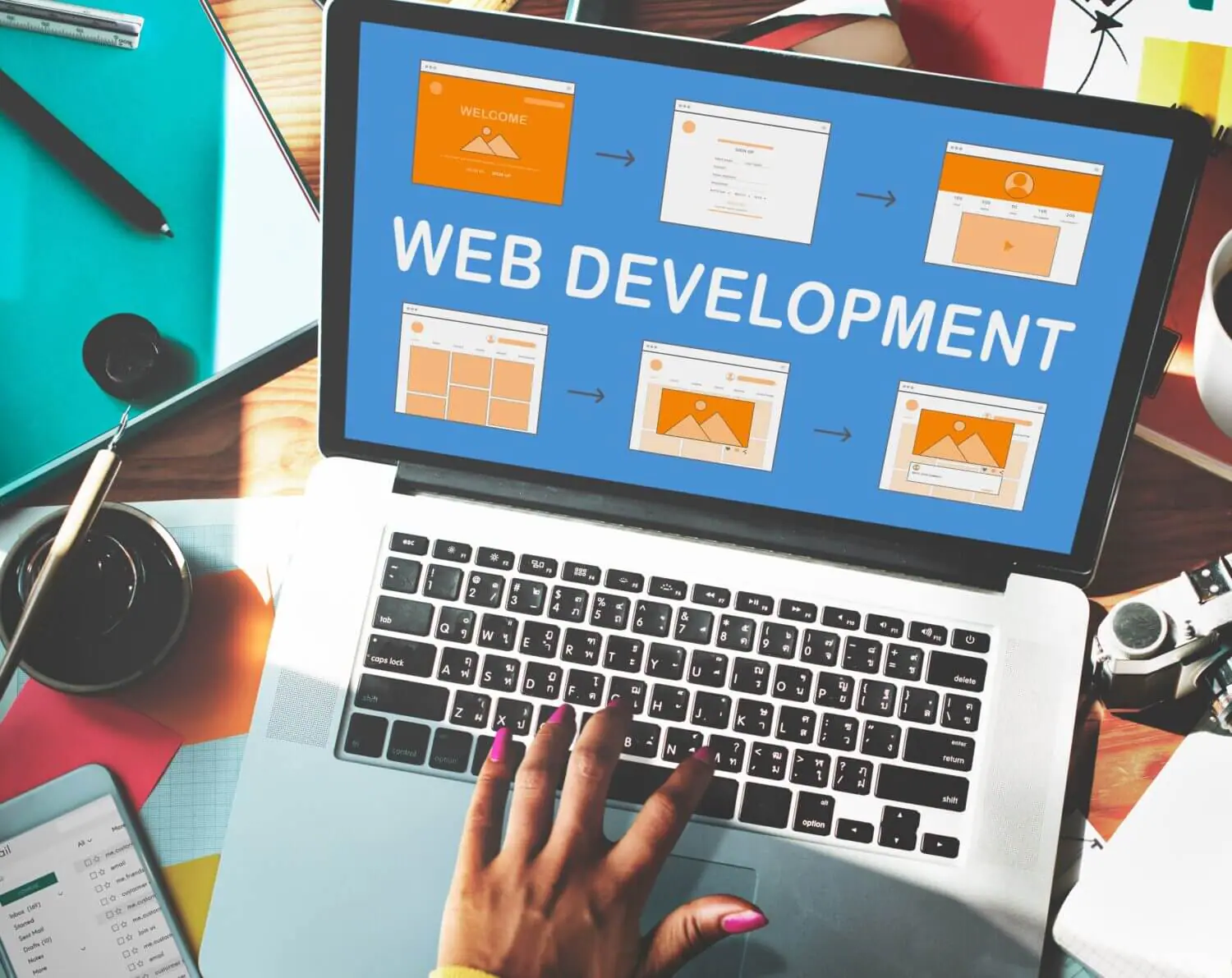As a business owner in today’s digital age, having an online presence is essential for success. While there are countless tools and platforms available to help create and manage websites, understanding the basics of web development can greatly benefit your business.
From creating user-friendly designs to optimising for search engines, being knowledgeable about web development can give you the upper hand in attracting and retaining customers.
In this blog post, we’ll cover everything you should know as a business owner when it comes to web development – from key terminology to important strategies – so you can make informed decisions for your online presence.
The Importance of a Strong Online Presence
In the modern, digitally-driven competitive market, a strong online presence is not merely an option, but a necessity for every business. Imagine your website as your digital storefront; it’s often the first point of interaction between your business and potential customers.
A professionally developed, user-friendly, and engaging website enhances your brand’s credibility and expands your reach beyond geographical boundaries. An effective online presence can be the determining factor that influences a customer’s decision to choose you over your competitors.
It’s a powerful tool that allows for robust and cost-effective marketing, round-the-clock accessibility, and a platform to demonstrate your industry expertise. Therefore, investing in web development to boost your online presence is an investment in the future success of your business.
The Difference Between Front-End and Back-End Web Development
Front-end and back-end web development are the main pillars of website building, each with unique functions and skill sets. Front-end development, also known as “client-side” development, focuses on the website’s user interface and experience.
It involves creating the website’s layout, buttons, images, and other visual elements using languages like HTML, CSS, and JavaScript. Back-end development, or “server-side” development, handles the behind-the-scenes operations such as databases and servers.
Back-end developers use languages like PHP, Ruby, Python, and Java to ensure the server, application, and database work smoothly together. In essence, front-end developers bring a website’s design to life while back-end developers make it functional.
Together, they create a successful, fully operational website. Understanding these differences helps you communicate with your web development team and guide your business’s online presence.
Choosing the Right Development Platform for Your Business Needs
Selecting the appropriate development platform for your website is a critical decision that can significantly impact your business’s online success. A development platform is the base upon which your website is built and can greatly influence its functionality, usability, and scalability. When deciding on the right platform, there are several factors to consider.
Firstly, identify your business needs and goals. These could range from selling products online, showcasing your portfolio, blogging, or perhaps a combination of these. Different platforms have varying strengths; for instance, WordPress is excellent for blogging, while Shopify or Magento is ideal for e-commerce.
Next, consider your budget. Custom-built websites can offer a higher degree of personalization but are usually more expensive than using off-the-shelf platforms. Open-source platforms like WordPress are also a cost-effective option, especially for small businesses.
Ease of use is another important factor. Some platforms require advanced technical knowledge, while others offer user-friendly interfaces suitable for non-technical users.
Lastly, consider the scalability of the platform. As your business grows, your website will need to adapt and grow accordingly. A good platform should be able to accommodate this growth without requiring a complete redesign.
In conclusion, choosing the right development platform is a balance between your business needs, budget, technical ability, and future growth plans. Understanding these factors will help you make an informed decision that can contribute positively to your online success.
Exploring Popular Content Management Systems (CMS): WordPress, Shopify, and Squarespace
When choosing a Content Management System (CMS) for your business website, there are popular options available, each with strengths and weaknesses. Let’s explore three commonly used CMS: WordPress, Shopify, and Squarespace.
WordPress: The most popular CMS worldwide, WordPress is a free, open-source platform known for its flexibility, vast plugin ecosystem, and strong community support. It’s great for blogs, small business websites, and e-commerce stores with WooCommerce. Customization and troubleshooting may require some technical knowledge.
Shopify: Designed for e-commerce, Shopify simplifies setting up and managing online stores. It offers built-in tools for inventory management, payment integration, and marketing. Shopify is user-friendly with excellent customer support, but it operates on a paid subscription model.
Squarespace: Known for visually appealing design templates, Squarespace is ideal for showcasing creative work. It has a drag-and-drop interface for creating professional-looking websites without deep web development knowledge. However, Squarespace lacks the flexibility and extensive plugin availability of WordPress.
In conclusion, choose a CMS that aligns with your business needs, budget, and technical skill level.
The Importance of Responsive Design for Mobile Users
In our mobile-centric world, responsive web design is crucial. It adapts to any screen size, providing a seamless experience for visitors on desktops, tablets, or mobile devices.
With over half of web traffic coming from mobile users, optimising for mobile is essential. Responsive design improves user experience and boosts search engine rankings. Google prioritises mobile-friendly websites in search results, increasing visibility and attracting more traffic.
A responsive design also enhances audience engagement. Easy navigation and interaction on mobile devices encourage return visits, content sharing, and business engagement.
In conclusion, responsive design is indispensable for web development. It ensures accessibility and user-friendliness, driving online success.
The Role of User Experience (UX) in Web Design and Its Impact on Customer Satisfaction
User Experience (UX) in web design is about creating an easy-to-use, intuitive website tailored to users’ needs. It involves understanding user behaviour and translating it into every aspect of your site – from layout and navigation to content and aesthetics.
A well-executed UX design boosts customer satisfaction by providing a seamless experience. When users can easily navigate, find information, and complete actions, they’re more likely to return and engage. This positive experience impacts bounce rates, conversion rates, and customer retention.
Additionally, focusing on UX design considers website accessibility. Making your site accessible to individuals with disabilities widens your customer base and showcases inclusivity, enhancing satisfaction.
In conclusion, UX plays a vital role in web design, directly impacting customer satisfaction. Prioritising user experience creates visually appealing, functional, accessible websites tailored to users’ needs, driving engagement and loyalty.
Accessibility Considerations for Individuals with Disabilities
Web accessibility ensures individuals with disabilities can perceive, understand, navigate, and interact with your website. It’s a social responsibility and often a legal requirement. Consider these to enhance accessibility:
- Colour contrast: Ensure high colour contrast using tools like WebAIM’s Colour Contrast Checker.
- Alt text for images: Provide brief descriptions (alt text) for images to aid visually impaired users.
- Keyboard navigation: Ensure all functionalities are accessible via the keyboard alone.
- Captions and transcripts: Provide captions and transcripts for audio and video content for users with hearing impairments.
- Readable fonts: Use simple fonts and ensure sufficient text size for better readability.
By considering these, you expand your website’s reach and usability, demonstrating inclusivity. Web accessibility requires ongoing attention and maintenance.
Budget-Friendly Options for Web Development: Hiring Professionals vs. DIY Website Builders
For web development, businesses have two main options: hiring a professional web developer or using a DIY website builder. Both options have pros and cons, and the choice depends on your budget, technical ability, site complexity, and time investment.
Hiring Professional Web Developers: Professional web developers provide customization and unique designs that align with your brand. They also offer ongoing support and maintenance services.
DIY Website Builders: If your budget is limited, Wix, Weebly, and Squarespace are great alternatives. These platforms offer predesigned templates and easy-to-use interfaces, even with limited technical skills.
They also have affordable monthly plans that include hosting services. However, they may lack the flexibility and scalability of custom-built websites, and you’ll need to invest time in learning and building.
Consider your business needs, budget, and technical limitations before deciding on the best approach for your web development project.
In Conclusion
The digital era has underscored the critical importance of a robust online presence for businesses of all sizes. Web development serves as an integral tool to enhance brand visibility, improve customer engagement, and drive business growth.
Understanding the basics of front-end and back-end web development, the significance of selecting the right development platform, and the role of successful UX design is crucial. Equally important is the need to optimise for mobile users, prioritise accessibility, and navigate the cost-effective options for web development.
The investment in a well-developed website is an investment in the future success of your business. Armed with this knowledge, you can now make informed decisions that align with your business goals, budget, and technical abilities.
About Us
Ready to transform your small business’s online presence with a professionally designed, user-friendly website? At Creative Ground, we specialise in crafting bespoke website designs on WordPress that not only look good but also work seamlessly.
We also offer Google Ads, website security, and local SEO services to help ensure that your beautifully designed website gets the traffic it needs to grow your business.
Get in touch with us to start the journey towards digital success together. Contact us by filling out our contact form or calling us at 0449 679 51 to get started. Let’s create, together.






